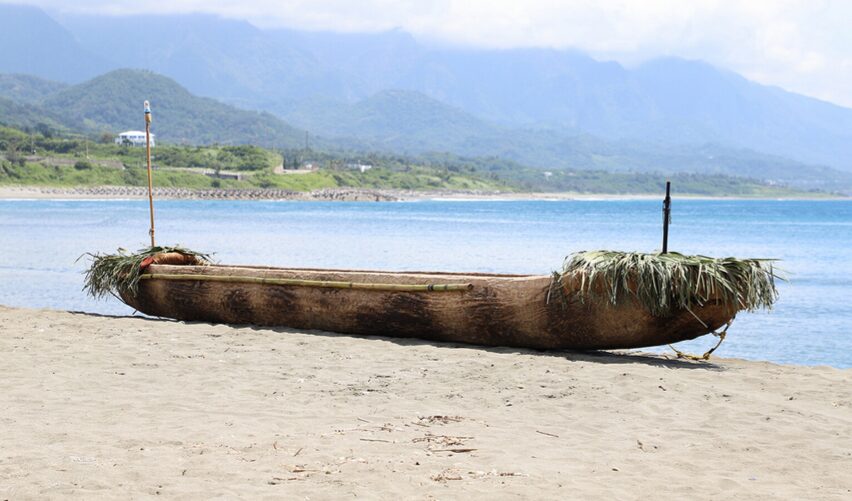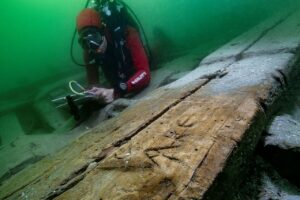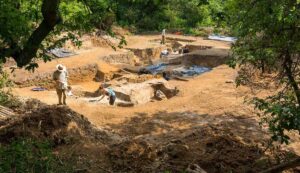About 30,000 years ago, humans arrived in Japan’s southern Ryukyu Islands, 110km from Taiwan.
The archaeological record hasn’t preserved any clues as to how these Paleolithic people made the crossing to this new land. But the obstacles to doing so seem, at first glance, insurmountable without modern technology and knowledge. So in 2013, a group of Japanese archaeologists set out to recreate the trip using only Paleolithic tools.
This week, they published the results of their experiments in the journal Science.
A challenging crossing
Archaeologists find evidence of humans in the Japanese archipelago as early as 35,000 BCE. Judging from the dates at different archaeological sites, the earliest inhabitants of Japan seem to have migrated both northward from Taiwan and southward from Korea.
But from the Taiwanese coast, the low-lying islands of Ryukyu sit below the horizon. One of the strongest currents in the world, called Kuroshio (“Black Tide”), runs northward from Taiwan. It carries any lackadaisical drifters west of the Ryukyu Islands at a velocity of one meter per second. And a distance of 110km from Taiwan to the nearest Ryukyu island, Yonaguni, was no joke for people without metalworking or sails.
Yet they made it.
When the Japanese archaeologists set out to recreate this trip, they didn’t have an easy time. They tried reed-bundle rafts and bamboo rafts, both of which floundered in the strong current. The bamboo also began to crack and fill with seawater, further weighing it down.

The archaeological team set out from Wushibi on the western coast of Taiwan to Yonaguni Island in the Ryukyus. The color scale shows the water depth, and the large shaded arrow shows the swift Kuroshio current. Photo: Kaifu et al, 2025
The beginning of the voyage
In July of 2019, the team attempted one final trip. They launched Sugime, a hand-made dugout canoe, from the coast of Taiwan in typical calm summer weather.
Construction of the dugout started in 2017. The team used replicas of stone axes found in Japanese Paleolithic sites to fell a one-meter-thick Japanese cedar tree. They peeled off the bark and carved a seating area in the center of the trunk. While dugout canoes from the Paleolithic haven’t survived in Japanese archaeological sites, dugouts from the later Jōmon period (starting around 14,000 BCE) boast burn marks on the inside. In turn, the team polished the inside of their craft with fire.

Felling the tree that made the dugout canoe. Photo: Kaifu et al, 2025
The plan was simple: to row from Wushibi, on the eastern coast of Taiwan, across the strait to the small Ryukyu island of Yonaguni. A motorized ship with safety supplies would escort the Paleolithic reenactors.
Sugime‘s crew consisted of five paddlers, four men and one woman. For the first hour and a half of their journey, they skidded over a calm sea, with only wispy clouds on the horizon. Then the water depth dropped, and they hit the edge of the Kuroshio. The wind slammed into the current, giving rise to choppy water and an ever-present swell as high as the side of their boat. One of the crew had to pause paddling to bail out the dugout over and over again.
They kept rowing into the night. The wind dropped slightly, but the dugout kept threatening to capsize in the strong swell. There was no rest that night, and it was a constant fight to keep the nose of the dugout pointing northeastward. As the water approached a flow of 1 m/s, the dugout pivoted northward along with the current.
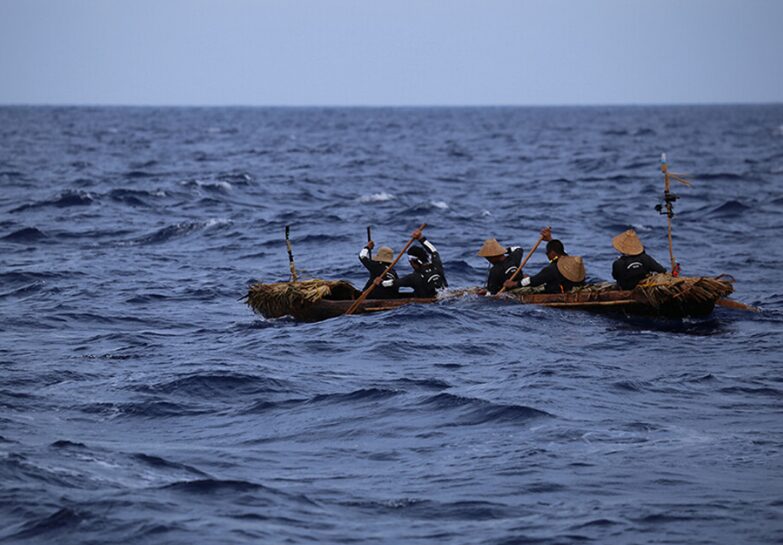
The crew at the end of the first day, confronting choppy waters and the Kuroshio. Photo: Kaifu et al 2025
Just as steering the boat was a challenge, so too was figuring out where to steer it. Clouds obscured the stars, and GPS wasn’t an option in the Paleolithic. Only the direction of the swell indicated which way was north.
As midnight approached, the wind dropped and stars appeared. The paddlers took turns resting. But in the early hours of the morning, clouds once again obstructed the stars. At 3:40 am, while the captain was taking his rest, one crew member thought she saw dawn on the horizon. The crew pointed the dugout accordingly.
Then the captain woke up. The dugout was traveling due north, dragging them off course from their destination. He realized that far from being dawn, the light on the horizon was from the northern cities of Japan and was reflecting off the clouds. Sugime turned eastward once more.
Exhaustion and triumph
The next day dawned bright. Still unable to see their destination, Yonaguni Island, the crew kept paddling east-southeast to combat the current of the Kuroshio. Unbeknownst to them, however, they had left the Kuroshio behind them. They were now heading due east, away from Yonaguni.
They had already exhausted all the water they had packed for the voyage. Tired and thirsty, they called in a resupply. At noon, finding themselves in calmer waters and realizing they had left the Kuroshio, the whole crew slept for half an hour.
As they paddled into the afternoon, Yonaguni still failed to appear. They steered the dugout this way and that, hoping it would peek above the horizon. It didn’t. Moreover, the crew was exhausted. Some of them jumped into the ocean to rest in the cool water. But nothing prevented the onset of excruciating muscle cramps and, as evening drew close, hallucinations.
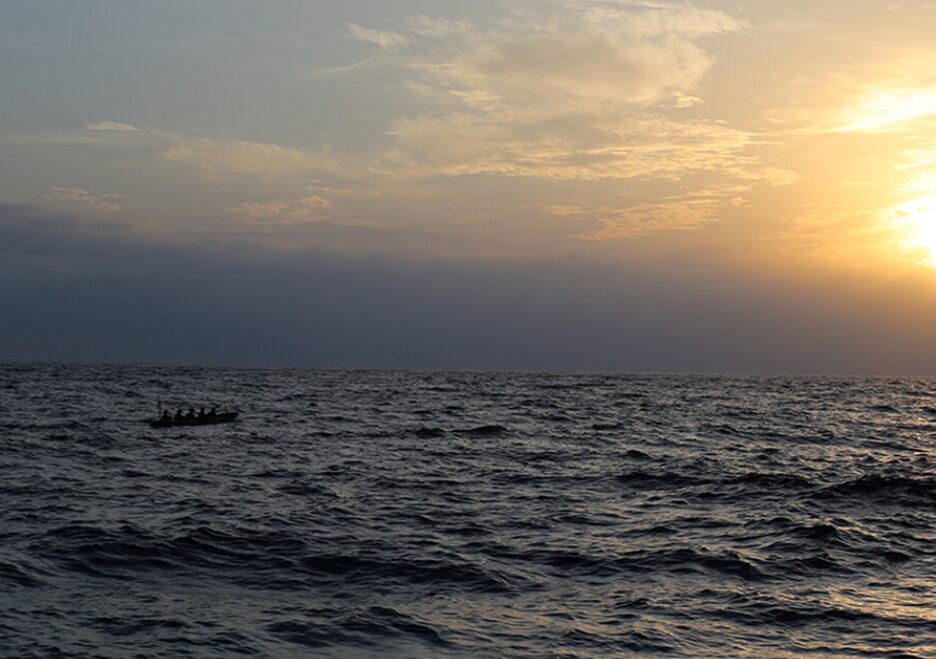
Rough waters right before leaving the Kuroshio after dawn on the second day. Photo: Kaifu et al, 2025
Then, just before the sun set, a bird flew overhead. Before this, the sea had been lifeless and isolated. Now, land was near, even if they couldn’t see it.
The sun was so intense that the food they had brought with them began to rot. They obtained replacements from the escort ship and ate a dinner of rice balls and noodles. As night slid in, the crew rested while the boat drifted loose on the water.
The captain kept watch. He thought he saw the glint of a lighthouse on the horizon that he hoped was from Yonaguni. As it turned out, it was an optical illusion, but the swell carried the dugout gently northeastward. In the early hours of the morning, the actual light from Yonaguni’s lighthouse appeared on the horizon.
When the crew awoke in the dark hours before dawn, they began the final stretch of their journey toward it.
It was not until just after dawn on the third day that the crew finally saw Yonaguni Island. They were 20km from shore and had been rowing for over 40 hours.
Five hours later, they reached land. Since their crew included Taiwanese paddlers, they had to follow immigration protocol and land Sugime at a predetermined beach. Paleolithic explorers, presumably, did not have this restriction.
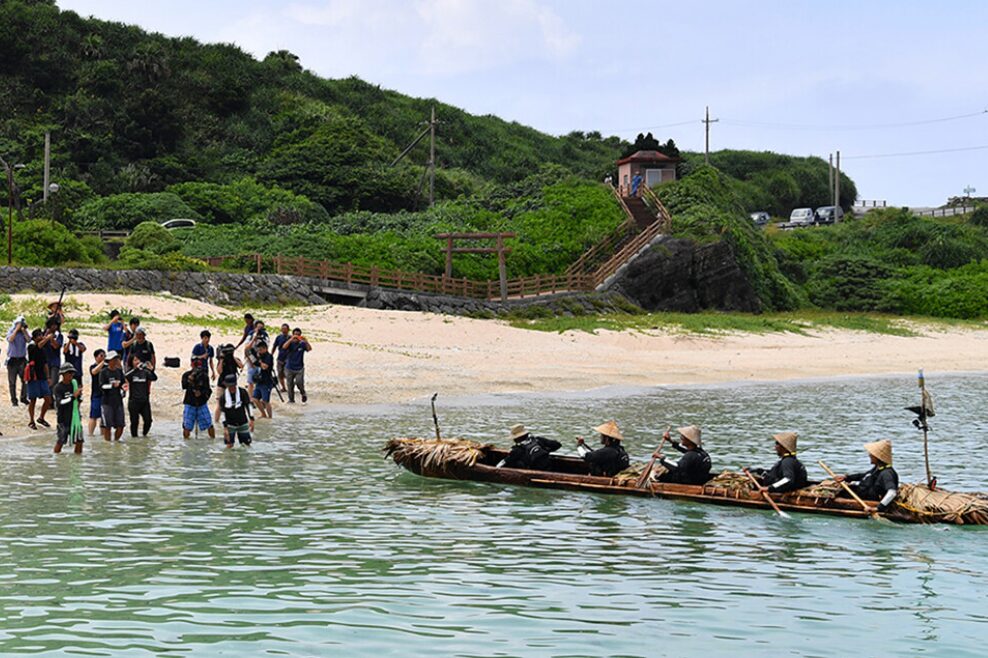
Arriving at Yonaguni after 45 hours of paddling. Photo: Kaifu et al, 2025
Piecing together a Paleolithic voyage
The crew had made it. Dugout canoes, unlike reed and bamboo rafts, can cross the Kuroshio. But at various points during the trip, the crew’s mistakes had worked in their favor. When they rested, the swell naturally carried them in the right direction. And the first hint they saw of Yonaguni was from a lighthouse, which does not feature in Stone Age archaeological sites. Was their success a fluke?
To test this, the team used the data from their paddling to simulate hundreds of dugout voyages starting from different points in Taiwan. They used both modern and Paleolithic oceanographic models to approximate the flow of the Kuroshio, varying the strength of the current between ebbs and peaks. As long as the virtual boats paddled in the right direction, they made the crossing, even when the Kuroshio was at its strongest.
But the voyage could not be completed by accident. The Kuroshio does not carry mariners from Taiwan comfortably to the shores of Yonaguni. Paleolithic humans had to identify the direction and strength of the Kuroshio and plan their voyage accordingly.
They also had to know Yonaguni was there. From the coast of Taiwan, it is not visible. Only when one climbs the mountains in the north does the little speck of island appear over the horizon. The summit of the highest of these mountains sits at nearly 4,000m.
This research in experimental archaeology shows that inhabitants of Taiwan 30,000 years ago did not drift aimlessly towards the Ryukyu Islands. They climbed mountains, they built sturdy boats, and they knew how to chart a course against one of the strongest currents in the world.
